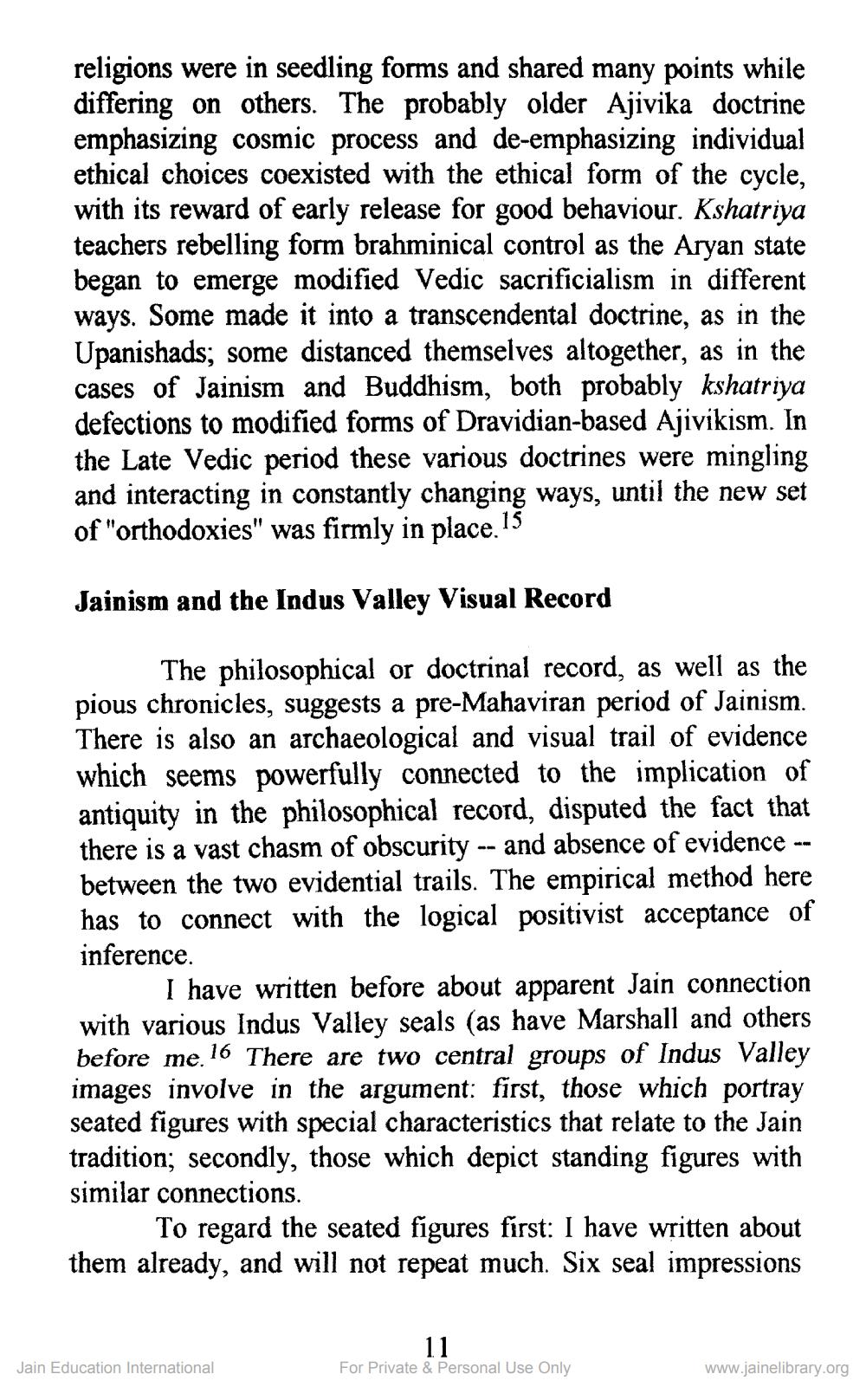________________
religions were in seedling forms and shared many points while differing on others. The probably older Ajivika doctrine emphasizing cosmic process and de-emphasizing individual ethical choices coexisted with the ethical form of the cycle, with its reward of early release for good behaviour. Kshatriya teachers rebelling form brahminical control as the Aryan state began to emerge modified Vedic sacrificialism in different ways. Some made it into a transcendental doctrine, as in the Upanishads, some distanced themselves altogether, as in the cases of Jainism and Buddhism, both probably kshatriya defections to modified forms of Dravidian-based Ajivikism. In the Late Vedic period these various doctrines were mingling and interacting in constantly changing ways, until the new set of "orthodoxies" was firmly in place. 15
Jainism and the Indus Valley Visual Record
The philosophical or doctrinal record, as well as the pious chronicles, suggests a pre-Mahaviran period of Jainism. There is also an archaeological and visual trail of evidence which seems powerfully connected to the implication of antiquity in the philosophical record, disputed the fact that there is a vast chasm of obscurity -- and absence of evidence -- between the two evidential trails. The empirical method here has to connect with the logical positivist acceptance of inference.
I have written before about apparent Jain connection with various Indus Valley seals (as have Marshall and others before me. 16 There are two central groups of Indus Valley images involve in the argument: first, those which portray seated figures with special characteristics that relate to the Jain tradition; secondly, those which depict standing figures with similar connections.
To regard the seated figures first: I have written about them already, and will not repeat much. Six seal impressions
Jain Education International
For Private & Personal Use Only
www.jainelibrary.org




